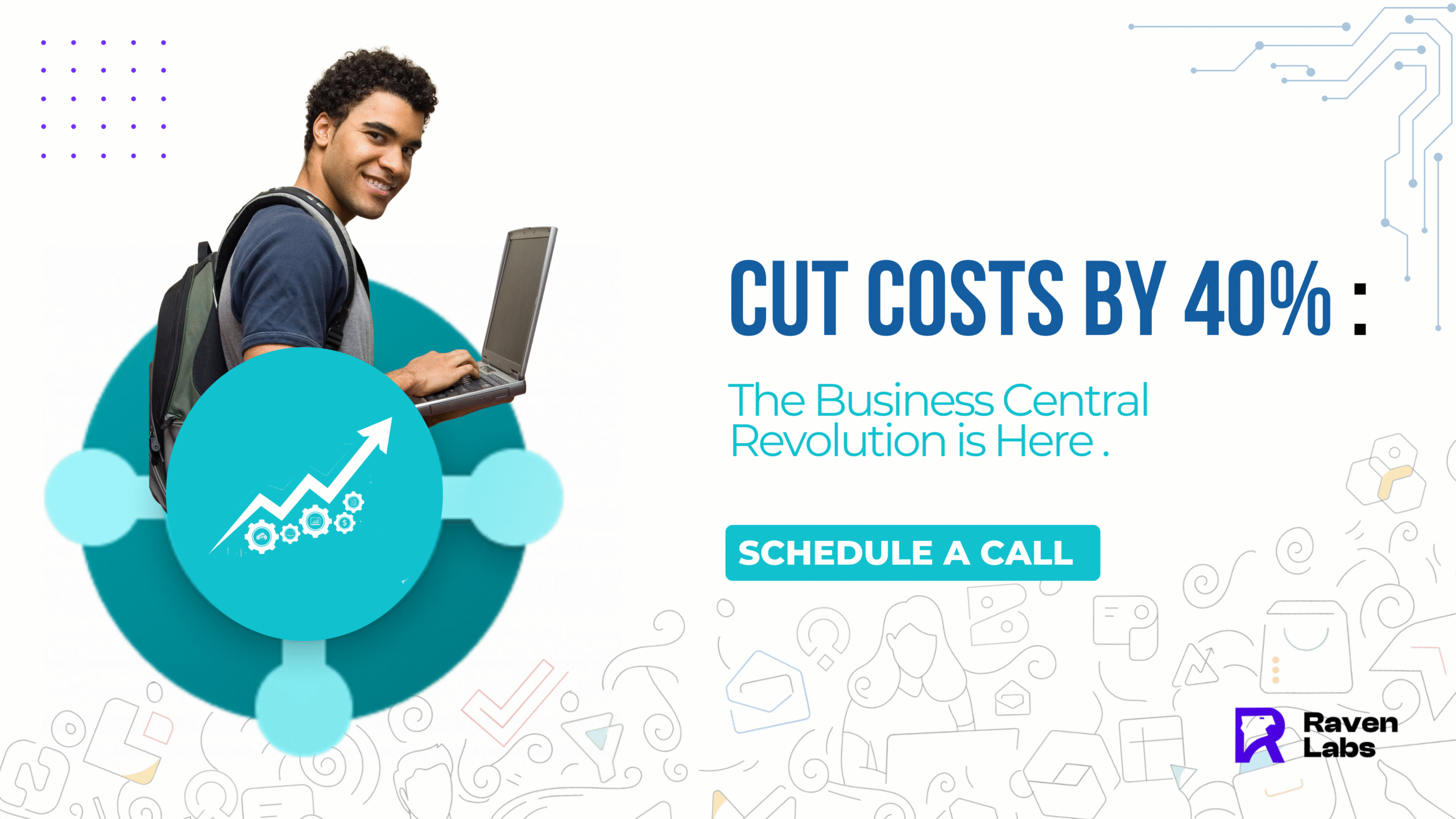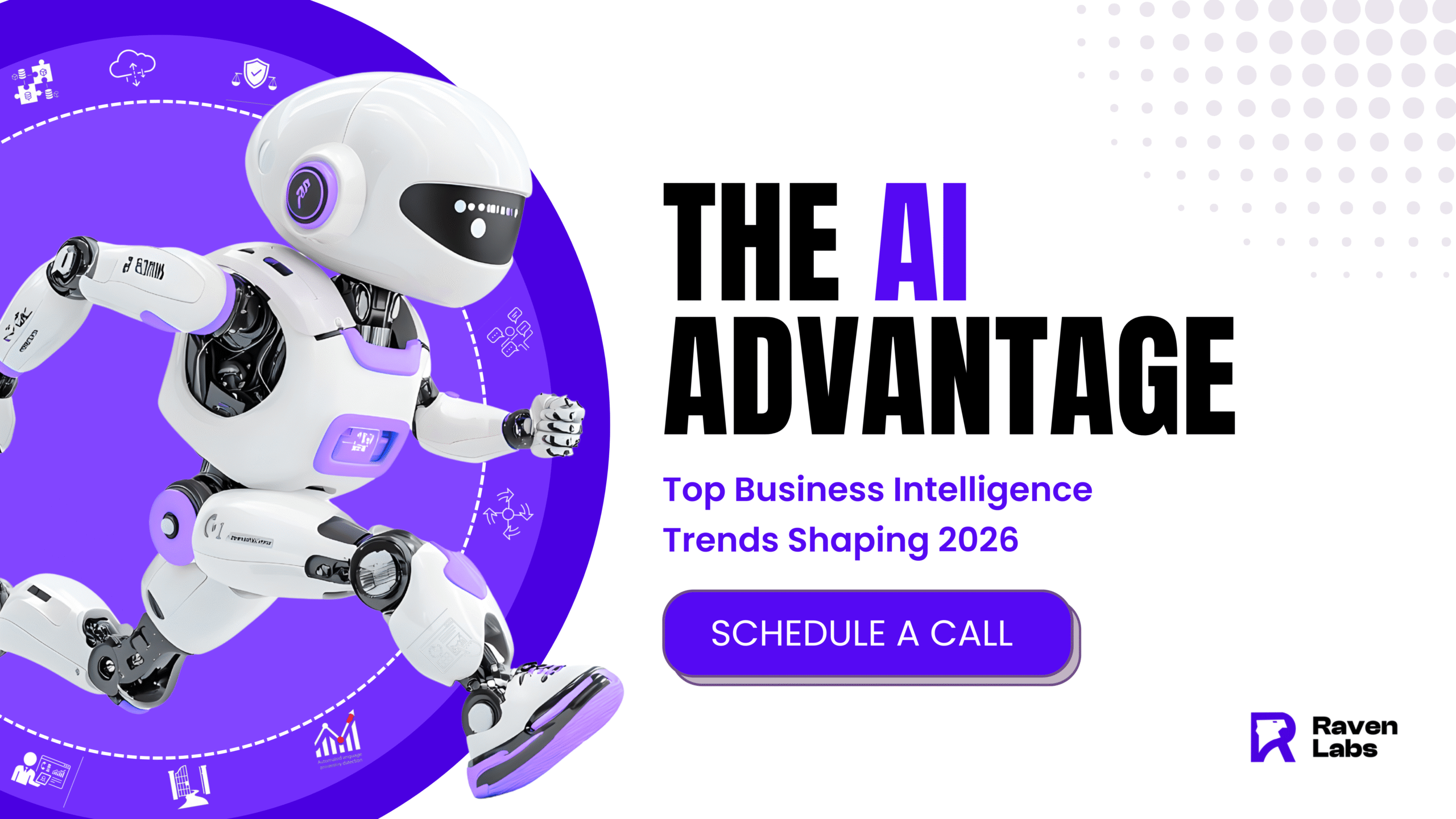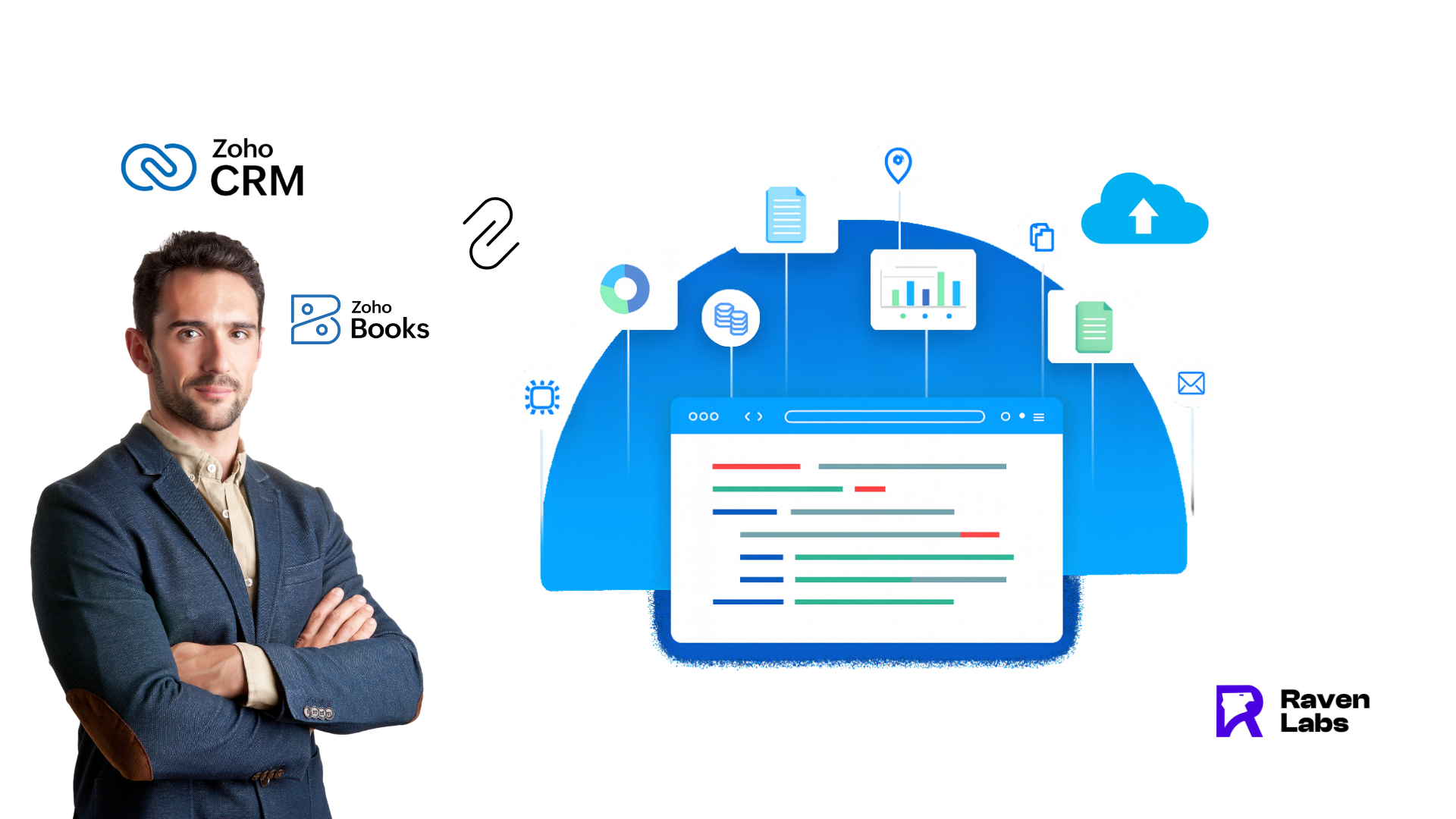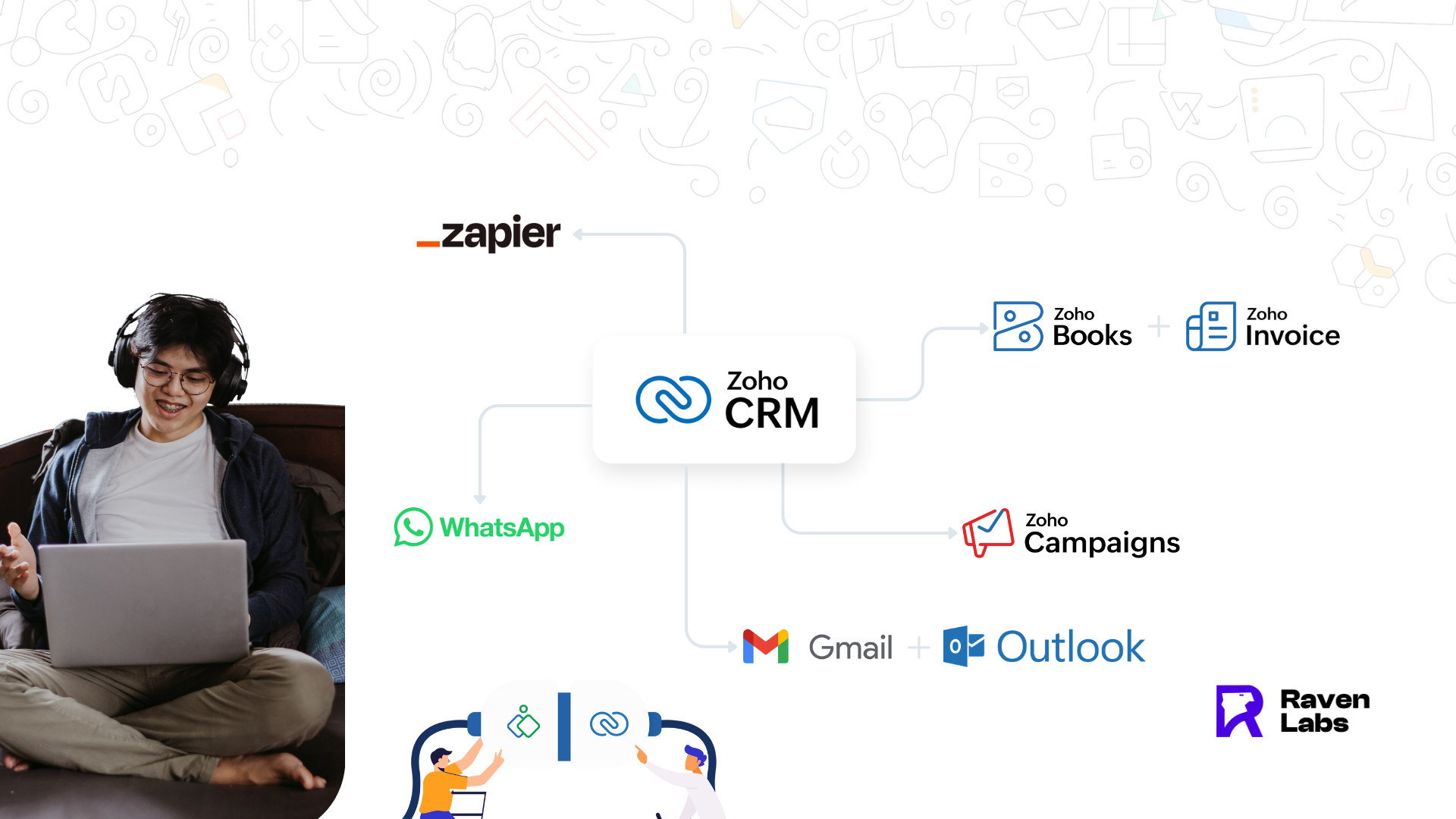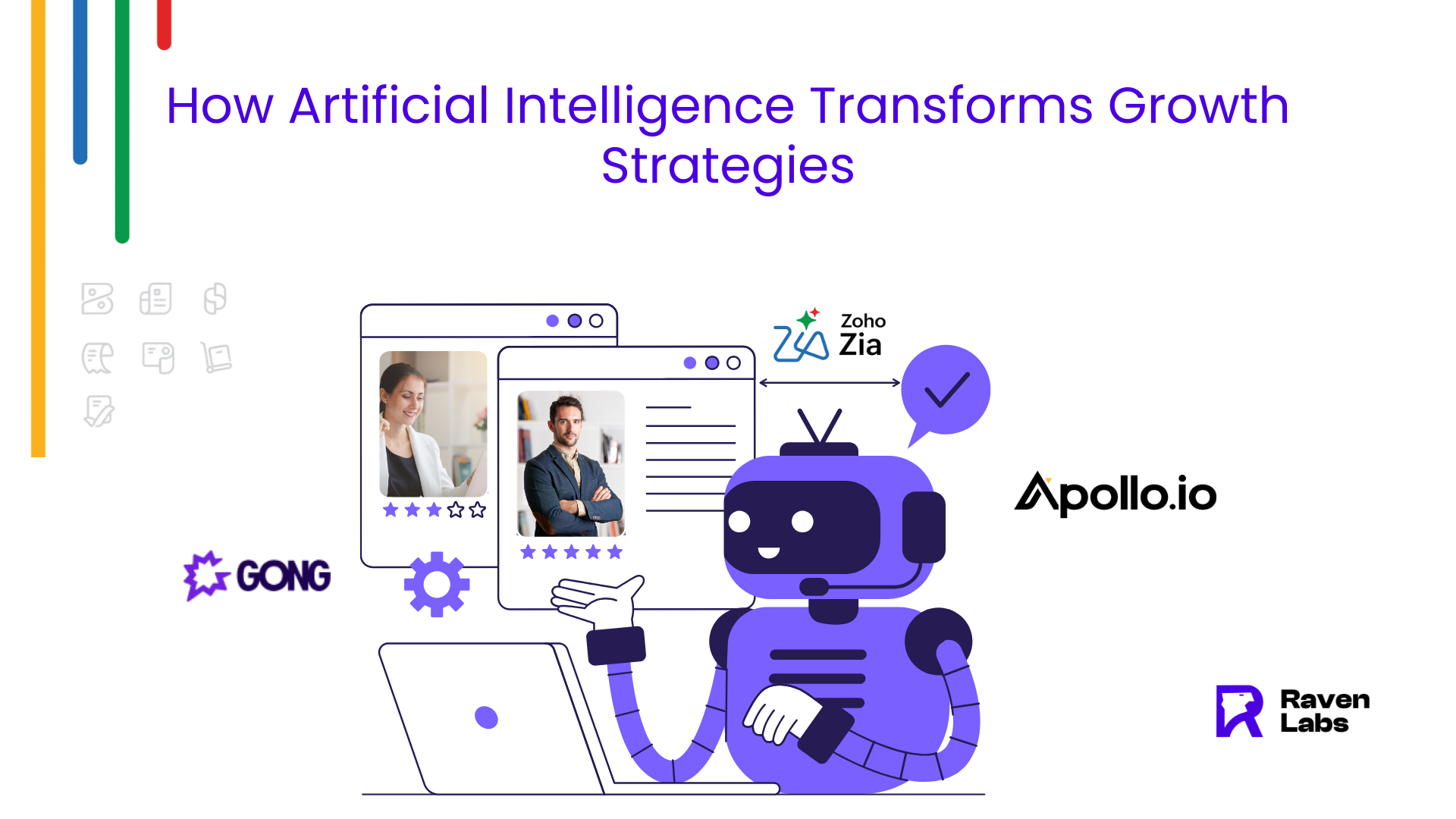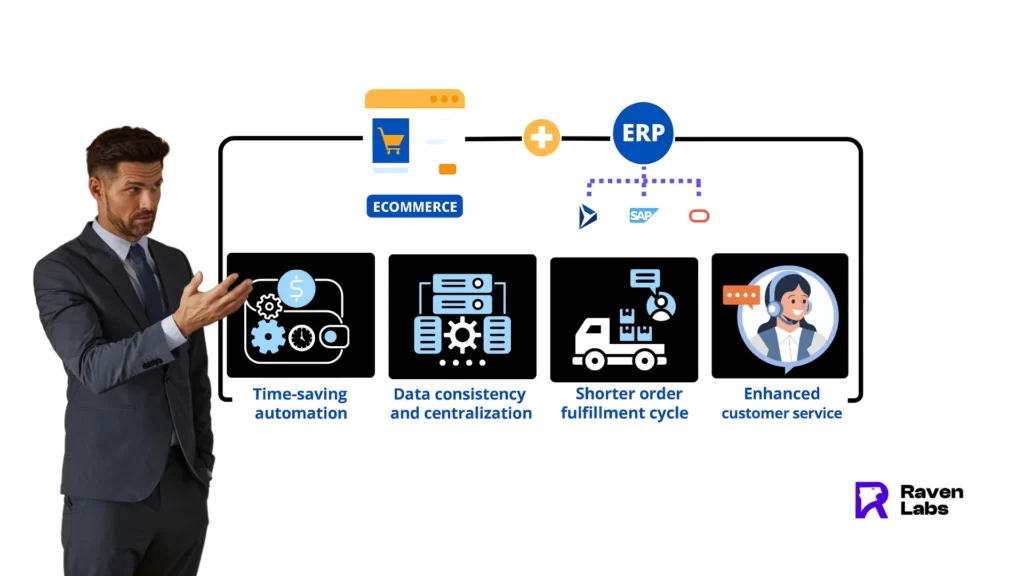
What is E-commerce ERP Integration?
Picture yourself running an online store where your website, inventory, and accounting systems can’t communicate with each other. E-commerce ERP integration fixes this basic problem by linking your online storefront to your back-office enterprise resource planning system.
E-commerce ERP integration connects your customer-facing online store with your internal business management software. Your two key systems can now exchange data automatically in real time. The e-commerce market will grow to USD 47.23 trillion by 2030. This growth makes system integration more significant than ever.
A well-integrated system lets your e-commerce platform (like Shopify, Magento, or BigCommerce) work in harmony with your ERP system (such as Microsoft Dynamics, NetSuite, or SAP Business One). This creates one reliable source for:
- Product information and pricing
- Inventory levels in all channels
- Customer data and purchase history
- Order processing and fulfillment status
The integration updates information between platforms automatically instead of requiring manual data transfers. This eliminates isolated data pools. Your ERP system processes orders, updates inventory, and manages fulfillment automatically once a customer buys from your website.
Ready to streamline your business? Contact us to learn how E-commerce ERP integration can work for you.
Why E-commerce ERP Integration Matters for Modern Businesses?
Modern businesses struggle with increasingly complex operations. E-commerce ERP integration solves the biggest operational challenges companies face today.
Centralizing Data for Better Decision-Making
Organizations lose about $12.9 million each year due to poor data quality and discrepancies. Companies that centralize their business data through e-commerce ERP integration create a single source of truth to make smarter decisions. Research shows that 79% of enterprise executives believe companies will fall behind if they don’t adapt to big data. A centralized data management system helps businesses quickly identify market trends and customer behaviors. This creates a solid foundation for strategic planning.
Removing Manual Processes and Data Silos
Modern businesses often store data in silos because they use multiple disconnected software programs. This creates duplicate entries, human errors, and inconsistent information across channels. ERP integration automates manual data entry and reduces errors significantly. The staff can focus on more important tasks. Teams from sales, finance, inventory, and service get instant access to critical information when these silos break down.
Enabling Real-Time Information Flow Across Departments
Quick information flow between departments speeds up order fulfillment. This eliminates product waste, delayed shipments, and mismanaged orders. Support staff can access updated customer interactions on all channels. Everyone works together to deliver better customer support. The smooth communication between front-end operations and back-end processes helps make business decisions based on current, accurate data.
Key Benefits of E-commerce ERP Integration
E-commerce ERP integration brings remarkable benefits that affect business performance and customer satisfaction. Here are the main advantages that make this technology vital for today’s online retailers.
Improved Inventory Management and Stock Accuracy
E-commerce ERP integration shows up-to-the-minute inventory levels across sales channels and reduces the risk of stockouts and overstock situations. Your website’s product availability matches actual stock levels because of automated updates that build customer trust. The synchronization works both ways – online sales decrease ERP inventory, while new stock arrivals update the e-commerce platform automatically.
Simplified Order Processing and Fulfillment
Orders placed online show up instantly in your ERP system. This automation removes manual data entry and speeds up the order-to-cash process with fewer errors. The system starts the work to prepare orders for shipping, which leads to faster deliveries and better operations.
Better Customer Experience and Retention
American companies lose about $62 billion every year due to poor customer service. The unified view of customer interactions and purchase history helps create tailored experiences and quick support. Customers get accurate stock information, instant shipping updates, and reliable service at every touchpoint.
Improved Financial Reporting and Compliance
Your ERP’s accounting modules receive financial data automatically, which makes reconciliation easier. Companies see fewer errors in invoicing, billing, and payments while getting instant cash flow insights. The system also handles tax compliance by applying the right tax rules across different regions.
Scalability for Growth and Market Expansion
The U.S. B2B eCommerce market grows at 12.1% yearly, making scalability vital. Combined systems handle more transactions without slowing down. Businesses can add product lines, boost sales, or enter new markets without changing existing systems – making growth budget-friendly and manageable.
Essential ERP Features for E-commerce Businesses
The right features in your e-commerce ERP system will maximize operational efficiency. These critical components should be your business’s priorities:
Product Information Management (PIM)
A reliable PIM puts all product data in one place and serves as your single source of truth. This feature handles everything from simple product details to digital assets, technical specifications, and marketing content. PIM enhances ERP capabilities by adding rich product information beyond simple attributes. It also supports multiple languages and channels.
Order Management System (OMS)
OMS capabilities automate your entire order lifecycle from placement to fulfillment. The process becomes streamlined, reduces manual errors, and speeds up delivery times. Companies that use OMS cut operational costs by up to 30% and their processing speed improves by 40%.
Warehouse Management System (WMS)
WMS features optimize inventory control and warehouse logistics through live stock visibility across locations. Advanced systems support barcode scanning, RFID technology, and automated storage solutions. This helps prevent stockouts while keeping optimal inventory levels.
Integrated CRM Capabilities
CRM integration gives you a unified view of customer interactions across touchpoints. Your customers get customized experiences based on their purchase history and priorities. Sales teams can access customer data to suggest tailored recommendations that improve satisfaction and retention.
Automated Accounting and Tax Management
Financial automation manages invoicing, payment processing, and tax compliance. Modern systems use rules to generate invoices automatically upon fulfillment, schedule follow-ups, and settle payments. This reduces manual workload and ensures accuracy.
Real-Time Analytics and Reporting
Analytics capabilities turn raw data into actionable insights through customizable dashboards. Businesses can spot trends, predict outcomes, and optimize decisions based on current information. This leads to more proactive business strategies.
How E-commerce ERP Integration Works
E-commerce ERP integration works through an elegant system that connects your online store with back-office operations. This connection shows how modern businesses maintain a continuous connection in the digital world.
Data Flow Between Systems
The integration creates a pathway that enables systems to communicate both ways. Customer orders placed online appear in your ERP system automatically. Your website reflects any changes made to inventory or updates in the ERP. This two-way synchronization means all systems work with the same information.
Common Data Points Synced (Orders, Customers, Inventory, Pricing)
Key data elements flow between systems:
- Orders: Purchase details, payment information, shipping priorities
- Customer data: Contact information, purchase history, account details
- Inventory: Stock levels, warehouse locations, product availability
- Pricing: Standard prices, customer-specific pricing, promotions
Real-Time vs Batch Synchronization
Systems with live synchronization update data instantly as changes occur. This works best for businesses that need immediate inventory updates. Batch processing gathers data over time before syncing everything at once, either hourly or daily. Many businesses use both approaches – live sync for critical data like inventory and batch processing for less urgent information.
Frontend (E-commerce) vs Backend (ERP) Roles
The e-commerce platform manages customer interactions, product displays, and order placement. The ERP system handles inventory, accounting, shipping logistics, and data analytics. These systems work together to create a detailed business management ecosystem.
Integration Methods and Approaches
Businesses just need the right approach to connect their e-commerce platforms with ERP systems. Several methods exist with distinct advantages that depend on specific requirements.
Native (Built-in) ERP Ecommerce Integrations
Native integrations serve as out-of-the-box connectors that ERP vendors develop for popular e-commerce platforms. These pre-built solutions need minimal setup and create uninterrupted data flow between systems. Acumatica provides native connectors for Amazon, BigCommerce, and Shopify that sync data in both directions up to the minute. The main advantage comes from reduced implementation time without extra subscription costs.
API-Based Custom Integrations
Custom integrations let businesses develop tailored solutions through application programming interfaces (APIs). This approach gives maximum flexibility to match specific requirements but needs technical resources and time. Programmers can connect a software’s API code directly with the desired ERP system. API-based integrations might seem complex at first but offer greater control over data flows and customization options.
Third-Party iPaaS (Integration Platforms as a Service)
iPaaS solutions are cloud-based platforms that build and deploy integrations without hardware installation or management. These services provide pre-built connectors that make integration quicker between popular systems like ERPs, e-commerce platforms, and PIMs. iPaaS lets non-technical users create workflows through user-friendly interfaces. Many companies now prefer this approach to connect cloud-based applications with on-premise systems.
Point-to-Point vs Middleware Integration
Point-to-point integration connects systems directly without intermediaries. This method works well in simple scenarios but creates complexity as your ecosystem grows. Middleware integration uses a central hub (like ESB or iPaaS) that makes communication between multiple systems easier. Enterprise Service Bus (ESB) solutions act as middleware for on-premise environments but struggle with cloud integrations. The middleware approach brings better scalability, standardized communication, and simpler error management.
How to Choose the Right ERP for Your E-commerce Business
Choosing the right ERP system shapes your e-commerce operations’ future. Your business needs are the foundations of making this crucial choice.
Cloud vs On-Premise vs Hybrid ERP
Small to mid-sized e-commerce businesses find cloud-based ERPs attractive. These systems need less money upfront through subscription models (OpEx). Vendors handle updates and maintenance, while users get access from anywhere.
Large enterprises with strict regulatory requirements benefit from on-premise solutions. These systems need more initial money (CapEx) but give you total control over data and customization.
Hybrid ERPs blend both worlds. Businesses can keep sensitive operations in-house and tap into the full potential of cloud features. This balanced approach lets companies maintain critical functions locally.
Scalability and Flexibility Considerations
The best ERP grows with your business naturally. The system should handle more transactions, users, and sales channels smoothly. Budget-friendly solutions help avoid expensive system overhauls during expansion.
Industry-Specific ERP Solutions
Each retail sector faces unique challenges. A clothing retailer’s system might not work for a grocery store that needs to track perishable items. Your e-commerce category should guide your ERP choice.
Compatibility with Your E-commerce Platform
Your ERP must blend with your current e-commerce platform, POS systems, and essential third-party tools. Systems that don’t work together create data gaps. Customers might order products that aren’t in stock when this happens.
Step-by-Step Process to Implement E-commerce ERP Integration
A smooth e-commerce ERP integration needs a step-by-step approach to link your online store with back-office systems. The project needs careful planning and execution at every important stage.
Define Business Goals and Integration Scope
Start by setting clear integration goals and identify specific business challenges. Your implementation plan should break down the project into specific phases instead of rolling everything out at once. The core processes like inventory updates, order processing, and invoicing need attention first before moving to other features.
Map Data Flows and System Touchpoints
You need to identify matching data fields between your e-commerce and ERP systems. Essential data points usually include customer details, products, orders, status updates, tracking info, and inventory levels. Your data should be clean, properly formatted, and system-compatible before integration begins.
Select the Integration Method and Partner
Pick between custom-coded solutions, ready-made integration software, or middleware platforms based on what you need. Look for partners with expertise in both e-commerce and ERP systems when choosing integration providers. Pre-built connectors to your platforms are a big plus.
Test, Verify, and Optimize Before Launch
Run complete tests in different scenarios, including order placement, inventory updates, and customer data sync. User acceptance testing is vital—give your end users enough time to test the system properly.
Post-Integration Support and Maintenance
Create processes to maintain, support, upgrade, and fix issues after the system goes live. Train your employees quickly to improve their work and realize the full potential of your integrated system.
Frequently Asked Questions (FAQs):
- What’s the cost of e-commerce ERP integration?
Costs vary widely based on ERP and platform complexity, ranging from a few thousand dollars for simple integrations to much more for custom or enterprise solutions.
- Can ERP integrate with multiple e-commerce platforms?
Yes, many ERPs can connect to multiple e-commerce platforms like Shopify, Magento, and BigCommerce, provided suitable connectors or APIs are available.
- How long does implementation take?
Implementation typically takes from a few weeks to several months, depending on customization, data volume, and system readiness.
- Which ERP systems work best with Shopify / Magento / BigCommerce?
Popular choices for robust integration include NetSuite, Microsoft Dynamics, SAP Business One, and Acumatica, all of which offer strong connectors for major e-commerce platforms.
- Is cloud-based ERP more secure than on-premise?
Cloud-based ERPs often offer advanced, regularly updated security features, but ultimate security depends on vendor practices and your configuration.
Conclusion
ERP integration in e-commerce is changing how businesses succeed in the digital world. This piece shows how connecting customer platforms with back-office systems removes data barriers and automates key processes.
Your bottom line will benefit when you integrate successfully. Immediate inventory updates help avoid getting pricey stockouts and overstock issues. Orders process faster and with better accuracy. Customers get better experiences through consistent information at every touchpoint. Financial reports become more precise and compliance is simpler. Your business can scale without tech holding you back.
The right ERP system creates the foundations of good integration. Your unique business needs determine whether you should choose cloud-based flexibility, on-premise control, or a hybrid approach. The system should grow with your business and provide features specific to your e-commerce category.
E-commerce ERP integration ended up transforming separate systems into one business ecosystem. This digital shift gives companies the tools to meet customer needs, optimize operations, and make smart decisions based on data in a competitive market. Companies that adopt this integration gain an edge through excellent operations and superior customer service.
Ready to transform your e-commerce operations? Contact us to start your integration journey.
📞 Call us at: +61 432 913 392
📧 Email: info@ravenlabs.com.au
🌐 Visit: Raven Labs

